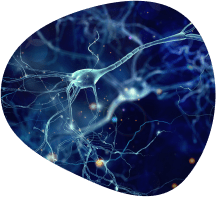Long COVID
Long COVID is a condition in which symptoms of COVID-19, the acute respiratory disease caused by the SARS-CoV-2 virus, persist for an extended period of time, generally three months or more. Common symptoms include lingering loss of smell and taste, hearing loss, extreme fatigue, and “brain fog,” though persistent cardiovascular and respiratory problems, muscle weakness, and neurologic issues have also been documented.
Patient Burden
The Centers for Disease Control recently reported that 5% of adults in the United States (more than 17 million individuals) currently have Long COVID over 3 million Americans have had to change their job or career trajectories due to the debilitating symptoms associated with Long COVID. The loss in quality of life and earnings and increased medical costs has an enormous economic impact estimated to be $3.7 trillion. To date, there are no non-pharmacological or pharmacological therapies proven effective for treatment of Long COVID.
Pathology & Physiology
Chronic inflammation is one of the main hypotheses that researchers have proposed to explain the persistence of symptoms in Long COVID. The expression of proteins associated with inflammation and immune regulation have been shown to be elevated in individuals with Long COVID versus fully recovered individuals. Specifically in individuals with “brain fog,” sustained systemic inflammation and persistent localized blood-brain-barrier (BBB) dysfunction are key physiological features. Thus, drugs modulating inflammation, and that work to regulate the BBB integrity, could represent potential therapeutic mechanisms for treating neurological symptoms of Long COVID.
LEARN MORE ABOUT OUR NOVEL CANDIDATE FOR LONG COVID

Longevity and Epigenetics
It’s about giving people hope, empowering them to take control of their health, and inspiring them to live their best lives.


